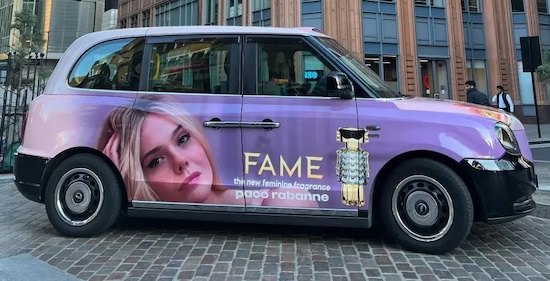The Pros and Cons of Street Furniture Advertising in Urban Areas

Street furniture advertising is a form of Out-of-Home that places advertisements at the eye-level of pedestrians, motorists, and cyclists.
With street furniture advertising, advertisers and brands ensure their ads get up and close and personal with urban outdoor audiences.
Examples of street furniture used for advertising include:
- On-pavement digital billboards
- Bus stops
- Park benches
- Lamp posts
- Bins
But what if your Out-of-Home campaigns in highly populated urban areas could increase their reach and frequency with audiences and make a greater impact by moving along with them? That is exactly what Drovo’s on-vehicle media provides, making your ads truly unmissable.
Let’s assess the pros and cons of brands opting for street furniture advertising in urban areas.
Pros of Street Furniture Advertising
The High Visibility of Street Furniture Advertising
Street furniture advertising in urban spaces enables brands to increase the visibility of their products and/or services in a cost-effective way. These ads are visible to pedestrians, motorists, and cyclists.
The UK is a highly populated place, home to 16 urban agglomerations with 500,000+ inhabitants, meaning there is plenty of potential to advertise to urban audiences in neighbourhoods with high footfall numbers.

Make an Impact on Younger Audiences
In 2020-21, there were 37,800 public transport buses in Great Britain in total.
Buses are frequently used by secondary school children travelling to and from school. Street furniture advertising therefore opens up the opportunity to increase your brand awareness amongst younger audiences, which are typically harder to intercept.
Flexibility
Another advantage of street furniture advertising in urban spaces is its flexible nature.
A digital billboard screen on a pavement or bus stop that changes every 10 seconds to show a different ad according to the time of day gives brands great flexibility.
For example, the flexibility of street furniture digital screens will enable electronic brands to display their new headphone range to early morning outdoor audiences listening to music on their way to work. Alternatively, a food brand will be able to display ads for their latest lunchtime sandwich meal deal offer at lunchtime, 12 pm-2 pm, to hungry outdoor audiences.
Make Your Brand Part of the City Landscape
You might want to consider how your Out-of-Home advertisements will fit in and become part of the city so that they will impact outdoor audiences constantly attracting eyeballs.
Street furniture advertising is a way to maximise your brand exposure by using urban architecture and everyday objects that residents and tourists alike come into contact with and see on a day-to-day basis.
Get in contact with Drovo
Striving to make a genuine impact on OOH audiences? Taxi advertising campaigns with Drovo are the solution.
Speak to the teamCons of Street Furniture Advertising
The Lack of Hyper Targeting Capabilities with Street Furniture Advertising
Although digital street furniture advertising, such as on-street D6s, can be targeted based on location and local footfall, static non-digital street furniture is a little generic and it falls short when it comes to providing more precise campaign targeting.
At Drovo, alongside measurable taxi advertising campaigns in 13 cities, we also offer dynamic digital on-vehicle screens in London that draw on vast on-street datasets to create hyper targeted customised ads for your outdoor audiences aligned with real-world triggers.
For instance, a vehicle displaying an advert for Ed Sheeran’s latest album outside a live Justin Bieber concert allows Ed Sheeran to take on-street audiences’ attention away from his competitor (Justin Bieber) through a moving on-vehicle ad.
Inability to Move with Outdoor Audiences
Yes, items of digital outdoor furniture are able to switch their displays, however, they do not physically move with your audiences.
At Drovo, we offer transit media solutions with our moving media campaigns. Lift your visibility by connecting with on-street audiences travelling to work or school, doing tourist activities, going shopping, in their car, out for a jog, or travelling on public transport.
We have an extensive network of over 40,000+ drivers at Drovo, and our taxis, cars, and vans are able to reach areas in campaigns that bus advertisements are unable to reach.
Use on-vehicle advertising to add a complementary moving media element to your static billboard advertising and posters and ensure outdoor audiences are drawn towards your key brand messaging.
The Drovo live vehicle tracking dashboard provides you with total transparency over the progression of your taxi campaigns in UK cities, this includes live reporting on impressions, specific geolocations (e.g. x number of impressions in x borough of London) and total hours and distance driven by each vehicle.

Interested in taxi advertising campaigns with Drovo?
Since you’ve got to the end of the blog, let’s have a chat about taxi campaigns
Speak to the team